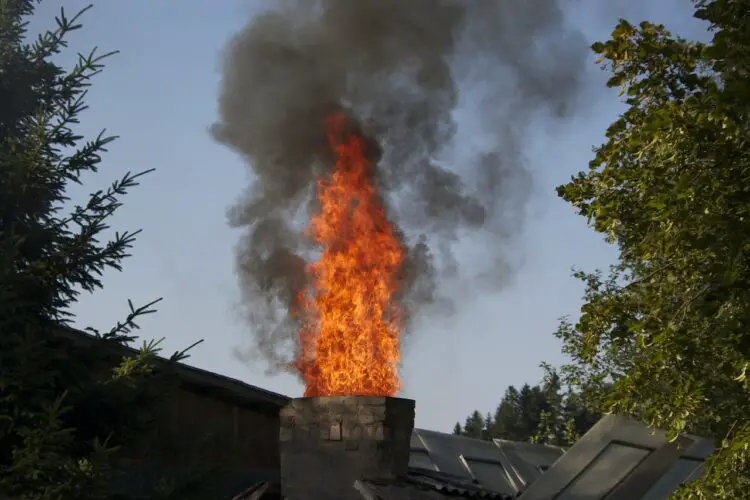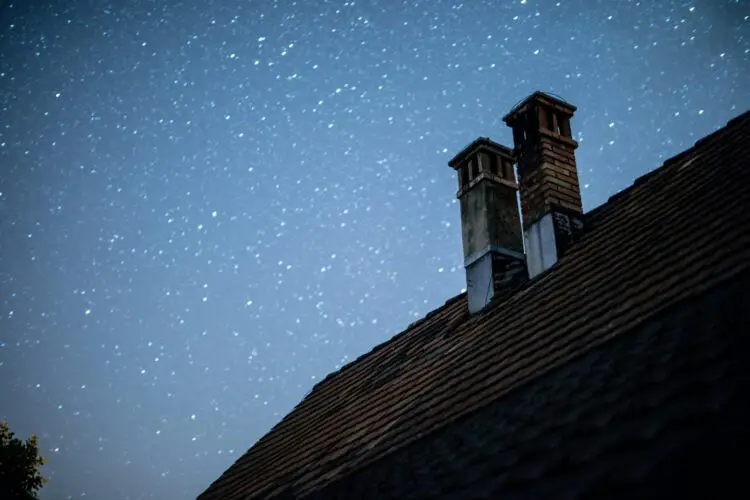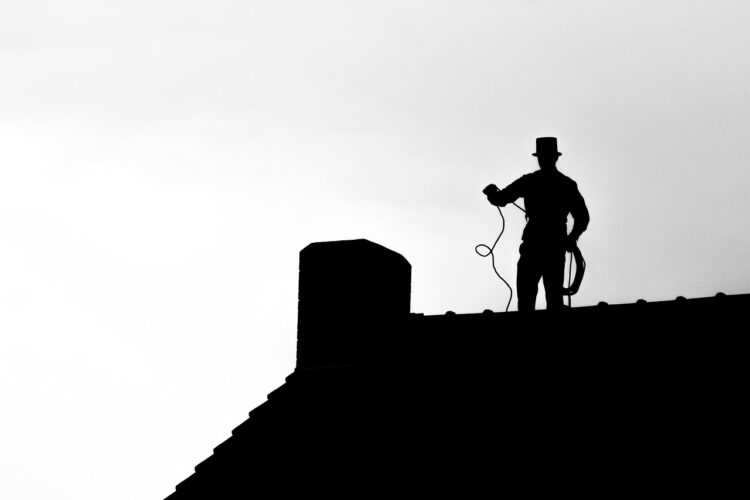Keeping your chimney in good condition is essential for ensuring the safety and efficiency of your home. A neglected chimney can pose serious risks, including chimney fires and carbon monoxide poisoning. To help you maintain a safe and functioning chimney, we’ve compiled the top 7 chimney maintenance tips. Whether you use your fireplace regularly or only during the colder months, implementing these tips will go a long way in preserving the integrity of your chimney.
Regular inspection and cleaning are vital. Scheduling an annual inspection by a professional chimney sweep is highly recommended. They will identify and address any potential issues before they become major problems. Additionally, regular cleaning will remove creosote buildup, reducing the risk of chimney fires.
Another crucial tip is to ensure proper ventilation. A properly functioning chimney needs sufficient air circulation to prevent the buildup of harmful gases. Keep your chimney flue open when using the fireplace and install carbon monoxide detectors in your home.
By following these chimney maintenance tips, you can enjoy a safer and more efficient fireplace experience while keeping your home and loved ones protected. So, let’s dive in and discover how to maintain your chimney for a warm and worry-free winter.
Importance of chimney maintenance
Regular inspection and cleaning are vital for the proper maintenance of your chimney. Scheduling an annual inspection by a professional chimney sweep is highly recommended. They will identify and address any potential issues before they become major problems. Additionally, regular cleaning will remove creosote buildup, reducing the risk of chimney fires.
Proper chimney maintenance is not only important for the safety of your home, but it also improves the efficiency of your fireplace. A clean and well-maintained chimney allows for better airflow, which means your fireplace will burn more efficiently and produce more heat. By investing in regular chimney maintenance, you can save on energy costs and enjoy a cozy and warm home during the winter months.
Signs that your chimney needs maintenance
It’s important to be aware of the signs that your chimney may need maintenance. One of the most common indicators is the presence of smoke or a strong odor coming from your fireplace. This could be a sign of a blockage or buildup in the chimney, which requires immediate attention.
Another sign is the presence of black, powdery residue on the walls of your fireplace. This is a clear indication of creosote buildup, which can be highly flammable and increase the risk of chimney fires. Additionally, if you notice any cracks or damage to the exterior of your chimney, it’s important to have it inspected and repaired as soon as possible.
Chimney cleaning and inspection
Regular chimney cleaning and inspection should be a priority for every homeowner with a fireplace. Cleaning your chimney removes creosote, a highly flammable substance that can accumulate over time. Creosote is formed when wood or fossil fuels are burned, and it can build up on the walls of your chimney, increasing the risk of chimney fires.
Inspecting your chimney allows you to identify any potential issues that may require repairs. A professional chimney sweep will thoroughly examine the interior and exterior of your chimney, checking for signs of damage, blockages, or other issues. Regular inspections can help prevent costly repairs in the future and ensure the safety of your home.
Preventing chimney fires
Chimney fires are a serious risk that can be prevented with proper maintenance. The buildup of creosote in your chimney is one of the main causes of chimney fires. To minimize this risk, it’s important to follow proper wood-burning techniques, such as using seasoned hardwood, which produces less creosote.
It’s also crucial to avoid overloading your fireplace with too much wood. Overloading can lead to a rapid buildup of heat and increase the risk of a chimney fire. Additionally, always use a fireplace screen or glass doors to prevent sparks from escaping and igniting any flammable materials in your home.
Proper wood-burning techniques
Using the right wood and following proper wood-burning techniques is essential for the safety and efficiency of your chimney. Seasoned hardwood, such as oak or maple, is the best choice for burning in your fireplace. Seasoned wood has been dried for at least six months, reducing the moisture content and minimizing the amount of creosote produced.
When starting a fire, use small pieces of wood and gradually add larger pieces as the fire builds. Avoid using green or wet wood, as it produces more smoke and creosote. It’s also important to avoid burning materials such as cardboard, trash, or treated wood, as they can release toxic fumes and increase the risk of chimney fires.
Chimney cap and spark arrestor installation
Installing a chimney cap and spark arrestor is an important step in chimney maintenance. A chimney cap helps keep debris, animals, and rain out of your chimney, preventing blockages and damage. It also acts as a spark arrestor, preventing sparks from escaping and potentially starting a fire on your roof or nearby vegetation.
Chimney caps come in various styles and materials, so it’s important to choose one that fits your chimney properly and provides adequate protection. Installing a chimney cap is a relatively simple process that can significantly extend the lifespan of your chimney and reduce the need for repairs.
Hiring professional chimney maintenance services
While some chimney maintenance tasks can be done by homeowners, it’s highly recommended to hire professional chimney maintenance services for annual inspections and major repairs. Professional chimney sweeps have the knowledge, experience, and specialized equipment to thoroughly inspect and clean your chimney.
Hiring professionals ensures that any potential issues are addressed promptly and accurately, reducing the risk of further damage or safety hazards. Additionally, professional chimney sweeps can provide valuable advice on proper wood-burning techniques, chimney maintenance schedules, and other important aspects of chimney care.
 Chimney maintenance tools and equipment
Chimney maintenance tools and equipment
If you prefer to tackle some basic chimney maintenance tasks yourself, it’s important to have the right tools and equipment. A chimney brush is an essential tool for removing creosote buildup. It’s important to choose a brush that fits your chimney properly to ensure effective cleaning.
Other tools you may need include a ladder, flashlight, safety goggles, and gloves. It’s also a good idea to have a bucket or tarp to collect any debris that may fall during the cleaning process. Remember to always follow safety guidelines and exercise caution when working on your chimney.
DIY chimney maintenance tips
While professional chimney maintenance is recommended for major repairs and inspections, there are some simple tasks you can do yourself to keep your chimney in good condition. Regularly check for any visible signs of damage or blockages, such as loose bricks or bird nests. If you notice any issues, consult a professional for further evaluation and repair.
You can also clean the exterior of your chimney by removing any debris or vegetation that may have accumulated around the base. Trim any overhanging branches to prevent them from falling onto your chimney during storms or strong winds. Additionally, make sure your chimney cap is secure and in good condition.
By following these top 7 chimney maintenance tips, you can enjoy a safer and more efficient fireplace experience while keeping your home and loved ones protected. Regular inspection, cleaning, and proper wood-burning techniques are essential for preventing chimney fires and ensuring the longevity of your chimney.
Remember to schedule an annual inspection by a professional chimney sweep and invest in regular cleaning to remove creosote buildup. Installing a chimney cap and spark arrestor can provide added protection, and hiring professional chimney maintenance services is highly recommended for major repairs and inspections.
By taking the time to properly maintain your chimney, you can enjoy a warm and worry-free winter, knowing that your fireplace is safe and efficient. Don’t neglect this important aspect of home maintenance – your chimney deserves the proper care to keep your home and family safe.
FAQ for “Top 7 Chimney Maintenance Tips for a Safe and Efficient Home”
1. Why is chimney maintenance important?
Chimney maintenance is crucial for the safety and efficiency of your home. Neglecting your chimney can lead to serious risks, including chimney fires and carbon monoxide poisoning. Regular maintenance ensures proper functioning, preventing potential hazards.
2. How often should I schedule a chimney inspection?
It is recommended to schedule an annual inspection by a professional chimney sweep. This helps identify and address any potential issues before they become major problems, ensuring the safety and longevity of your chimney.
3. What are the signs that my chimney needs maintenance?
Signs include smoke or strong odors coming from the fireplace, black residue on the walls, and exterior damage or cracks. Immediate attention is required if any of these signs are noticed to prevent potential dangers.
4. How does chimney cleaning improve efficiency?
Regular cleaning removes creosote buildup, a highly flammable substance that accumulates over time. A clean chimney allows for better airflow, improving the efficiency of your fireplace and reducing energy costs.
5. How can I prevent chimney fires?
Chimney fires can be prevented by following proper wood-burning techniques, using seasoned hardwood, avoiding overloading the fireplace, and installing a fireplace screen or glass doors to contain sparks.
6. What are proper wood-burning techniques?
Use seasoned hardwood like oak or maple, start with small wood pieces, and gradually add larger ones. Avoid burning green or wet wood, cardboard, trash, or treated wood, as they can produce more smoke and creosote.
7. Why should I install a chimney cap and spark arrestor?
Installing a chimney cap prevents debris, animals, and rain from entering your chimney, reducing blockages and damage. The spark arrestor prevents sparks from escaping, minimizing the risk of fires on your roof or nearby vegetation.
8. When should I hire professional chimney maintenance services?
Professional services are recommended for annual inspections and major repairs. Professionals have the knowledge, experience, and specialized equipment to address potential issues accurately, reducing the risk of further damage or safety hazards.
9. What tools do I need for DIY chimney maintenance?
Essential tools include a chimney brush, ladder, flashlight, safety goggles, and gloves. Have a bucket or tarp to collect debris during cleaning. Always follow safety guidelines and exercise caution when working on your chimney.
10. Can I do some chimney maintenance tasks myself?
Yes, some basic tasks can be done, such as checking for visible damage or blockages and cleaning the exterior of the chimney. However, for major repairs and inspections, it is recommended to consult with a professional chimney sweep.
11. How can I enjoy a warm and worry-free winter with a well-maintained chimney?
Follow the top 7 chimney maintenance tips, including regular inspection, cleaning, proper wood-burning techniques, and installing a chimney cap. Schedule professional services as needed to ensure the safety and efficiency of your chimney, providing a worry-free winter for your home and family.



 Chimney maintenance tools and equipment
Chimney maintenance tools and equipment